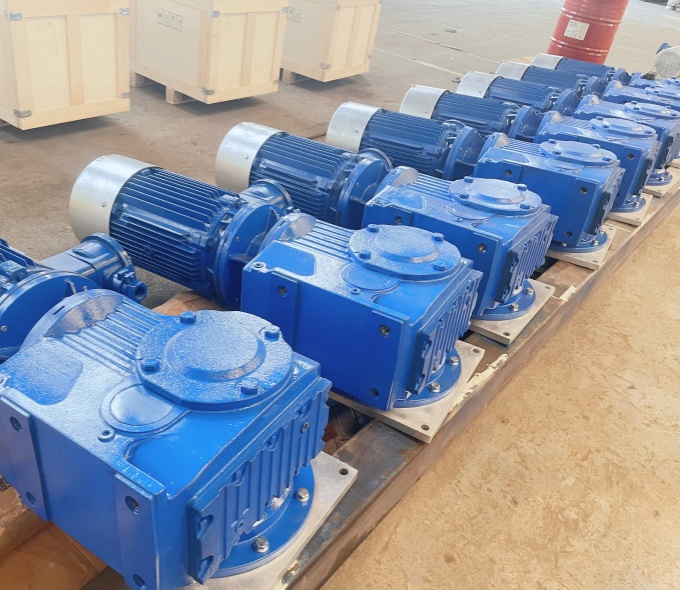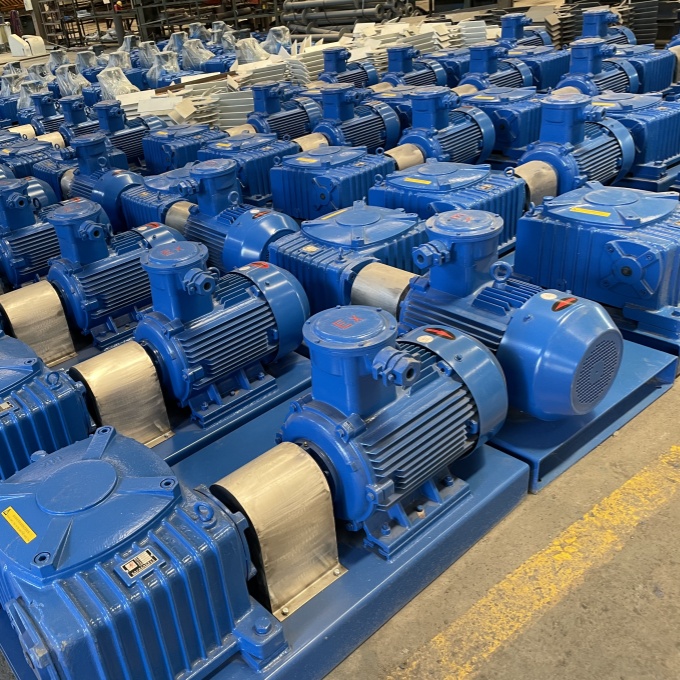

Mud Agitators: Essential Equipment for Efficient Drilling Fluid Management
Pub Date:Apr 23, 2025 | Views:190 |
In drilling operations, maintaining uniform drilling fluid properties is critical for optimal performance. A mud agitator plays a vital role in preventing solids settlement, ensuring consistent mud viscosity, and enhancing chemical treatment efficiency. This article explores the design, functionality, and applications of mud agitators in the oil and gas industry.

Drilling fluids tend to separate when stagnant, leading to:
Solids settling, which clogs tanks and pipelines.
Inconsistent mud density, affecting wellbore stability.
Poor chemical dispersion, reducing treatment effectiveness.
Increased operational costs due to wasted materials and downtime.
Mud agitators prevent these issues by continuously mixing fluids in storage tanks.
A standard mud agitator consists of:
Motor – Provides power (typically electric or hydraulic).
Gearbox – Reduces speed while increasing torque.
Shaft – Transfers rotational energy to the impeller.
Impeller (Mixing Blade) – Generates fluid movement (common types: axial, radial, or turbine-style).
Support Structure – Ensures stability in mud tanks.

Most common in drilling operations.
Use electric or hydraulic motors.
Suitable for high-density muds.
Use high-pressure fluid jets to mix mud.
No moving parts, reducing maintenance.
Less effective for viscous fluids.
Use compressed air to create turbulence.
Used in hazardous environments where sparks are a concern.
Motor Activation: The motor drives the gearbox, rotating the shaft.
Fluid Movement: The impeller creates a vortex, preventing solids from settling.
Continuous Mixing: Ensures uniform density and viscosity throughout the tank.
✔ Prevents Solids Deposition – Keeps weighting materials (e.g., barite) suspended.
✔ Enhances Chemical Efficiency – Improves mixing of additives like polymers and lubricants.
✔ Reduces Maintenance Costs – Minimizes tank cleaning and clogged suction lines.
✔ Improves Drilling Performance – Ensures consistent mud properties for better well control.
When choosing an agitator, consider:
Tank Size & Shape – Determines required power and impeller type.
Mud Properties – Viscosity, density, and abrasiveness affect design.
Power Source – Electric (for rigs with stable power) or hydraulic (for remote operations).
Material Durability – Stainless steel or coated components for corrosion resistance.
| Issue | Possible Cause | Solution |
|---|---|---|
| Excessive Vibration | Misalignment, impeller damage | Inspect shaft balance, replace damaged parts |
| Motor Overheating | Overloading, poor ventilation | Check power supply, ensure proper cooling |
| Poor Mixing | Wrong impeller type, low RPM | Upgrade impeller, adjust speed |
Variable Frequency Drives (VFDs) – Allow speed adjustment for different mud types.
Smart Agitators – IoT-enabled sensors monitor performance and predict failures.
Eco-Friendly Designs – Energy-efficient motors reduce carbon footprint.